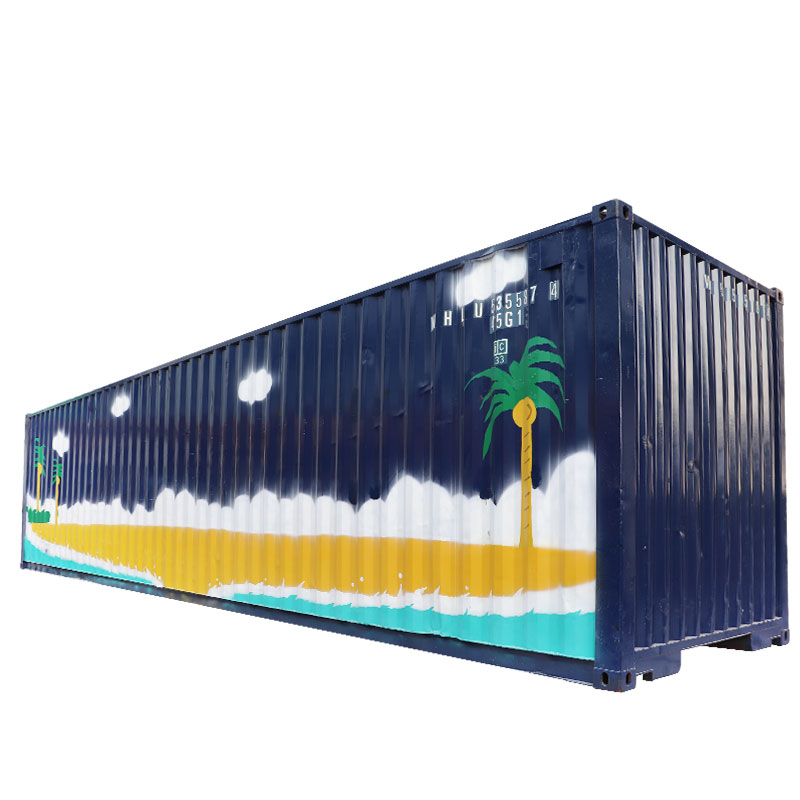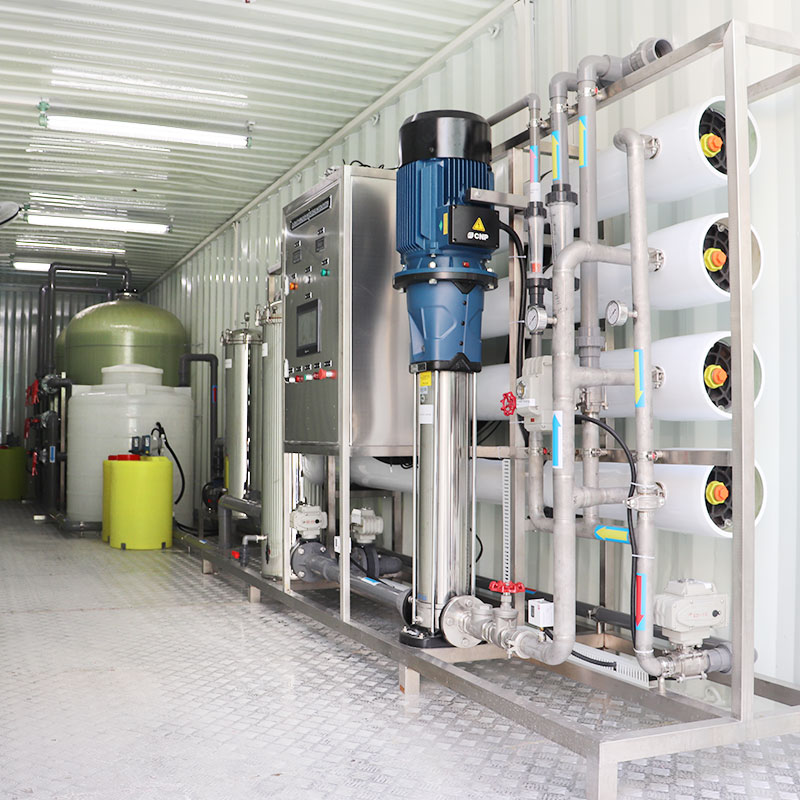What is a containerized water treatment plant?
The containerized water treatment plant is an innovative water treatment facility designed to address regional water shortages. The following will introduce the definition, working principle and role of containerized water treatment plant in solving water shortages.
1. Definition
A containerized water treatment plant is a mobile water treatment facility that is usually installed in a container and has the function of purifying water sources. They are designed to cope with water shortage areas and provide safe, clean drinking water and industrial water.
2. Working principle
The working principle of containerized water treatment plant is similar to that of traditional water treatment plant, which mainly includes steps such as pretreatment, filtration, reverse osmosis and disinfection. The water is first pretreated to remove large particulate impurities, then passed through filters and reverse osmosis membranes to remove dissolved solids and organic matter, and finally disinfected to ensure safe water quality.
3. The role of solving the water shortage problem
Containerized water treatment plants play an important role in solving water shortage problems. They can be deployed quickly, adapt to a variety of terrains and environments, and provide reliable water resources to areas lacking infrastructure. At the same time, they can also flexibly adjust their output according to demand to meet water needs in different scenarios.

What are the technical characteristics of containerized water treatment plants?
As an innovative water treatment technology, containerized water treatment plant has many unique technical characteristics. The following will introduce the technical characteristics of containerized water treatment plants and their significance in practical applications.
1. Mobility
The containerized water treatment plant uses containers as the outer shell and has good mobility. This allows them to be quickly deployed to areas of need to provide emergency drinking water and irrigation water to local residents.
2. Automation control
The containerized water treatment plant adopts an advanced automated control system that enables remote monitoring and intelligent operation of the equipment. This helps improve equipment stability and operating efficiency, and reduces labor costs and operational risks.
3. Customizable design
The design of containerized water treatment plants can be customized according to actual needs, including treatment capacity, water quality requirements and equipment configuration. This makes them suitable for a variety of different application scenarios and can meet the needs of different regions and industries.

How effective are containerized water treatment plants in responding to emergency disasters?
1. Emergency disaster response
Containerized water treatment plants play an important role in the face of natural disasters or emergency disasters. These facilities can be quickly deployed to disaster areas to provide badly needed drinking water and domestic water to the affected people. Due to its flexibility and efficiency, containerized water treatment plants can provide large amounts of clean water in the shortest time, helping to alleviate the plight of people in disaster areas.
2. Actual effect evaluation
The actual effects of containerized water treatment plants can be evaluated based on past emergency disasters. Through data collection and on-site surveys, we can understand the effectiveness of these facilities in responding to disasters, including the amount of water provided, water quality, and scope of services. These evaluation results can help improve equipment design and response strategies, improving the efficiency and effectiveness of future disaster response.
3. Analysis of successful cases
Analyzing past successful cases can provide a deeper understanding of the actual effectiveness of containerized water treatment plants in responding to emergency disasters. By studying these cases, we can discover the success factors and lessons learned, providing useful inspiration and guidance for future disaster response. These cases can also provide reference for governments, NGOs and other stakeholders to help them better plan and implement disaster response measures.
4. Improvement and Innovation
Based on the evaluation and analysis of the actual effects of containerized water treatment plants in emergency disasters, suggestions for improvements and innovations can be made. This may involve optimizing equipment performance, improving response strategies, and strengthening emergency response mechanisms. Through continuous improvement and innovation, the efficiency and reliability of containerized water treatment plants in disaster response can be improved, and the life safety and quality of life of disaster-stricken people can be better protected.






